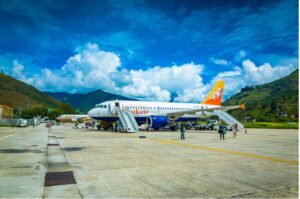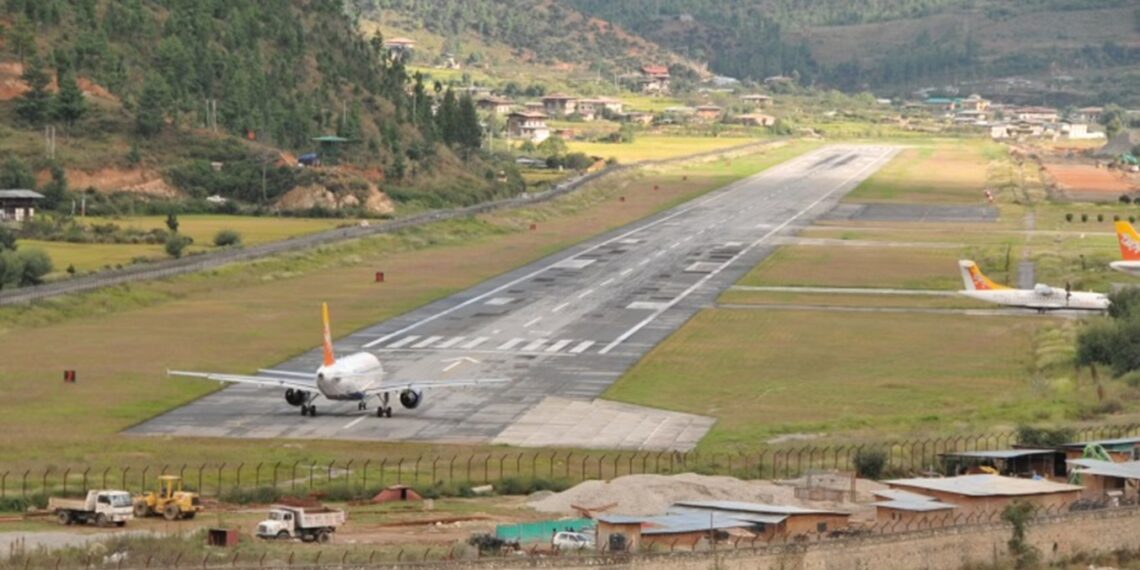Bhutan’s Paro International Airport, nestled amidst towering peaks and challenging terrain, consistently earns its reputation as one of the world’s most dangerous airports.
A select few pilots, marked by rigorous certification, dare to navigate the perilous approach to this unique landing strip.
Unlike conventional airports, Paro lacks radar assistance, compelling pilots to rely solely on manual control.
Strict procedures, designed by seasoned aviators and aircraft manufacturers, dictate precise speeds and altitudes at visual checkpoints during the descent into Paro.
Flights are permitted only during daylight with optimal visibility, often leading to diversions due to cloud cover.
The absence of Instrumental Landing Systems (ILS) adds to the challenge. While other airports utilise advanced navigation tools, Paro’s pilots depend on a single Very high-frequency Omni-directional Range (VOR) for guidance.
The unforgiving landscape, with peaks soaring up to 18,000 feet, coupled with the airport’s elevation of 7,364 feet, necessitates a meticulous flight approach.
Pilots must master a 45-degree angle manoeuvre between mountains, avoiding electrical poles and hillside rooftops, before making a rapid descent onto the 7,431-feet runway—a task demanding split-second decisions and precision.

To enhance safety, an Instrument Flight Procedure (IFP) known as RNP AR Cloud-Break is under development by NAVBLUE, an Airbus subsidiary.
This innovation aims to improve navigation in the challenging Paro airspace.
While most airports offer ample distance for pilots to align with the landing strip, Paro provides only one to two nautical miles—a testament to its exceptional complexity.
Nevertheless, Paro allows take-offs and approaches in both directions, setting it apart from other hazardous airports such as Tenzing-Hillary Airport in Lukla, Nepal.
Only two airlines, Drukair and Bhutan Airlines, brave the challenges of Paro.
Drukair, Bhutan’s state-owned flag carrier, operates a fleet comprising Airbus A319-100s and a turboprop ATR 42. Bhutan Airlines, a private carrier, also relies on the A319 for its operations.
Paro International Airport, originally established in the late 1960s for helicopter operations, has evolved to accommodate international flights.
Drukair, established in 1981, played a pivotal role in the airport’s development.
The Bhutanese Department of Civil Aviation oversees the airport, managing both domestic and international connections, including destinations like Bangkok.
Drukair, with around 25 Bhutanese and 10 expatriate pilots, boasts a modest team, with only a handful certified to navigate the challenges of Paro’s skies.
Notably, Ugyen Dema made history as Drukair’s first Bhutanese female Captain, breaking barriers in aviation since joining the airline in 2006.















